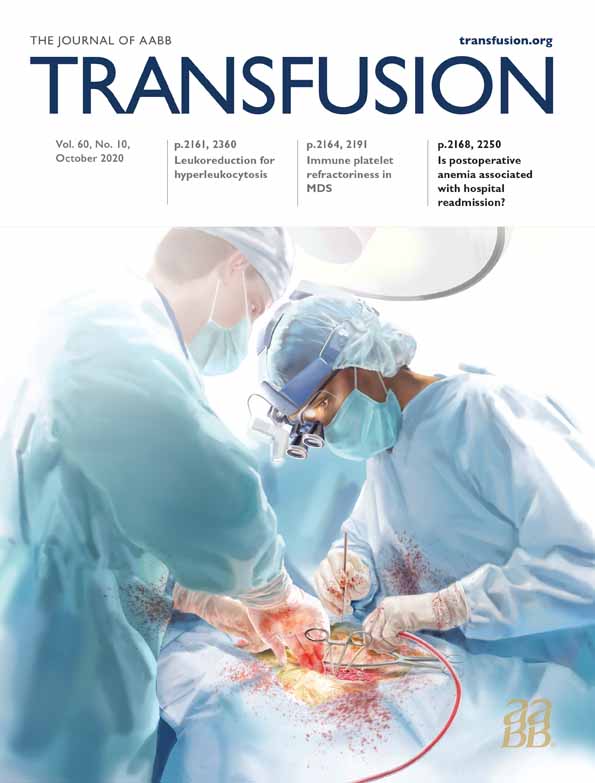Hospital discharge hemoglobin values and posthospitalization clinical outcomes in transfused patients undergoing noncardiac surgery
Prior Presentations:
Society of Anesthesia and Critical Care Medicine—May 15, 2019. Montreal Quebec, Canada.
Funding information: National Center for Advancing Translational Sciences, Grant/Award Number: KL2 TR002379 to Dr. Warner; National Heart, Lung, and Blood Institute, Grant/Award Number: HL121232 to Dr. Kor
Abstract
Background
Red blood cell (RBC) transfusion is common in surgical patients, yet optimal transfusion targets are incompletely defined in the perioperative period. Hemoglobin levels at the time of hospital discharge may provide insight into transfusion practices, anemia management, and patient outcomes.
Study Design and Methods
This is an observational cohort study of adults receiving RBC transfusion during noncardiac surgery from 2010 to 2014. Multivariable regression was used to assess the relationships between hospital discharge hemoglobin concentrations, anemia severity (severe: <8 g/dL; moderate: 8-10 g/dL; mild/none: ≥10 g/dL), and clinical outcomes, including a primary outcome of 30-day hospital readmission and secondary outcomes of posthospitalization RBC transfusion, composite stroke or myocardial infarction, and mortality.
Results
A total of 3129 patients were included: 165 (5%) with severe discharge anemia, 1962 (63%) moderate, and 1002 (32%) with mild/none. Five hundred ninety-two (19%) were readmitted, with the highest rates observed with severe anemia (26% vs 19% for mild/none). Readmissions were not significantly different after multivariable adjustment (overall P = .216); however, in those receiving postoperative intensive care, severe anemia was associated with increased readmission rates (hazard ratio [HR], 1.72; 95% confidence interval [CI], 1.09-2.71; reference mild/none]. Posthospitalization RBC transfusion rates were highest with severe anemia (25% vs 10% for mild/none; adjusted HR, 2.2; 95% CI, 1.5-3.3; P < .001). There were no significant differences in composite stroke/myocardial infarction, or mortality. RBC transfusion volumes did not modify anemia-outcome relationships.
Conclusion
Hospital discharge hemoglobin values for transfused surgical patients were not associated with hospital readmission rates except for those receiving postoperative intensive care. Further evaluation is warranted to understand downstream consequences of postsurgical anemia.
CONFLICT OF INTEREST
The authors declare no conflicts of interest.




